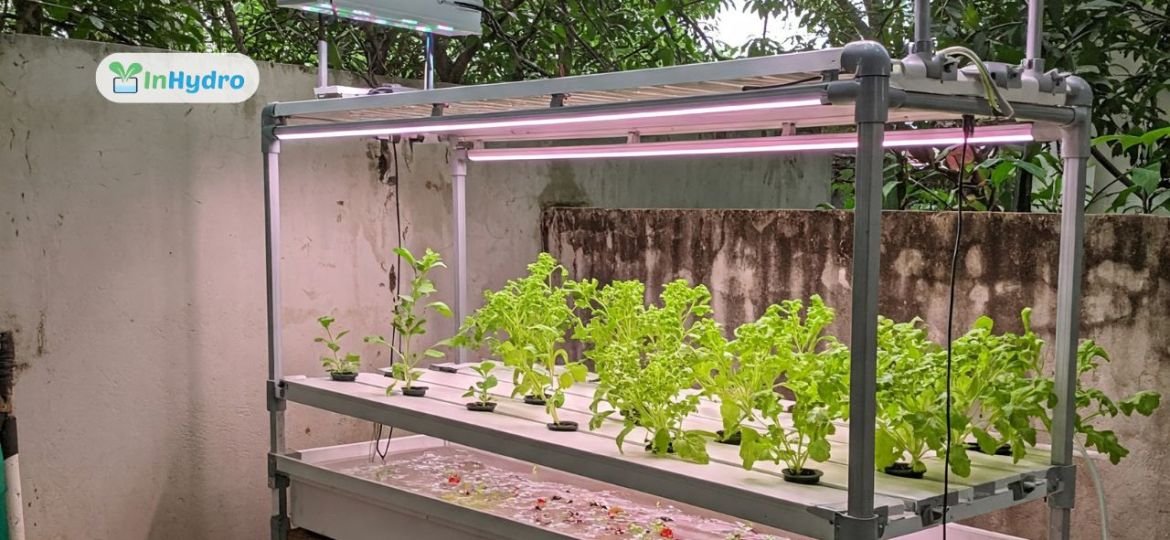
How to Build a Low-Cost Hydroponic System at Home in India
Hydroponics is gaining traction across India not only in commercial farming but also in home gardening. For urban dwellers and sustainability-conscious families, it offers a clean, soil-free, and space-efficient way to grow fresh vegetables and herbs. While large-scale systems involve automation and structure, a low-cost home setup can be a practical starting point for beginners. In this article, InHydro outlines the essentials of building an affordable hydroponic system tailored for Indian homes.
Understanding Basic Hydroponic Concepts
Hydroponics is the method of growing plants in a soil-free medium using a nutrient-rich water solution. The key elements for any system include:
- Grow medium (such as cocopeat, perlite, or clay pellets)
- Water reservoir
- Air and water pumps
- Net pots or holders
- Nutrient solution
While advanced systems use automation, lighting, and environment controls, these components can be significantly simplified for home setups to reduce costs.
Cost-Effective System Type: Kratky Method
For home growers in India, the Kratky hydroponic system is the most feasible low-budget model. It is non-circulating, requires no pump or electricity, and is ideal for leafy greens like spinach, lettuce, basil, and coriander.
Components Needed (Approx. INR 1,500–2,000 setup):
- Plastic container or food-grade bin (₹300–₹500)
- Net cups (₹5–₹10 per cup)
- Hydroponic nutrients (₹300–₹400 for a starter pack)
- pH testing kit (₹300)
- Cocopeat or Rockwool cubes (₹100–₹200)
- Tap water (pH-adjusted if needed)
This system operates by suspending the plant roots in a nutrient solution. As the water level drops due to plant uptake, air pockets naturally form around the roots, facilitating oxygen absorption without an air pump.
Step-by-Step Guide to Build Your System
Step 1: Choose the Right Container
Select a lightproof container with a lid. A 15–20 litre bin works well for beginners. Drill holes in the lid to hold net cups snugly.
Step 2: Prepare the Growing Medium
Place seeds in a moist cocopeat plug or Rockwool cube. Allow them to germinate until they develop small roots.
Step 3: Mix the Nutrient Solution
Follow the instructions on your hydroponic nutrient pack. Ensure water pH is maintained between 5.5 and 6.5 for optimal nutrient uptake.
Step 4: Set Up the Net Cups
Insert germinated seedlings in net cups with the grow medium and place them in the container lid.
Step 5: Add the Solution
Pour the nutrient solution into the container so that it just touches the bottom of the net cups. Top up when levels fall too low, but do not flood.
Indoor Placement and Light Requirements
Hydroponic plants require at least 4–6 hours of sunlight. If natural sunlight is insufficient, an LED grow light (₹500–₹800) can supplement the system. Keep the system in a ventilated balcony, terrace, or near a sunlit window.
Common Challenges in Home Hydroponics
Challenge | Solution |
Algae Growth | Use opaque containers and keep away from direct light on nutrient solution |
Nutrient Imbalance | Use branded hydroponic nutrients and monitor pH regularly |
Root Rot | Avoid overfilling the container; ensure part of the root is exposed to air |
Slow Growth | Ensure enough light and avoid overcrowding the system |
Why Home Hydroponics Makes Sense in India
Given increasing urbanization, limited soil access, and rising concerns over pesticide-laden produce, hydroponic systems offer Indian households a safe and sustainable solution. In regions with water scarcity, such systems are also more efficient, using significantly less water than traditional gardening.
InHydro’s Expert Support for Home Gardeners
While DIY is a great starting point, InHydro supports individuals looking to upgrade from basic setups to automated balcony farms or rooftop hydroponic gardens. We offer:
- Custom home system kits
- Nutrient solutions for Indian water conditions
- Online consultations and video guides
- Installation services for urban vertical gardens
Whether you’re growing for your kitchen or experimenting with clean food production, InHydro helps make soilless farming accessible and scalable.
Conclusion
Starting a low-cost hydroponic system at home in India is both practical and rewarding. With basic materials and the right guidance, you can grow your own vegetables free from harmful chemicals and external contaminants. As urban agriculture continues to grow, InHydro remains committed to enabling cleaner, smarter, and greener food production—starting right from your home.

